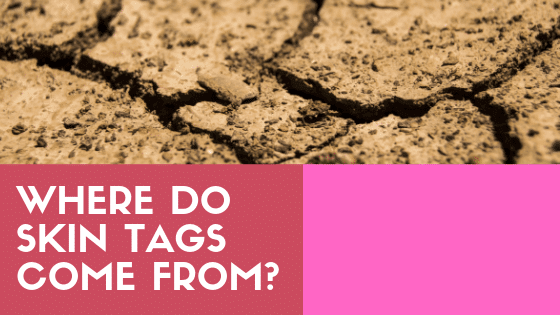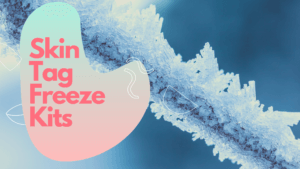Skin tags are more of a mild irritation than a medical problem. Those tiny little pockets of skin that seem to grow out of nowhere are in fact harmless and in most cases don’t cause much discomfort although they may be a little weird and ugly.
Contents
What causes skin tags and how to get rid of them?
Although scientists don’t really understand exactly what causes skin tags, several factors are associated with the growth of these little skin pockets:
1. Genetics
There does seem to be a genetic connection to the growth of skin tags. Some people are more genetically predisposed to skin tags than others. This basically means that some people are more likely to get skin tags than others. So if your parents, grandparents, uncles, aunts or other family members have skin tags, it is more likely that you will get them too.
2. Age
Skin tags are not present at birth and rarely occur on young children. However, they are far more common in adults and the elderly. This means that skin tags are age-related and that the growths are far more likely to appear as you age. Skin tags mainly consist of collagen fibers and blood vessels.
Collagen is a protein that is found everywhere in the skin and is responsible for young, plump, beautiful skin. Collagen production decreases as we get older. It is thought that this may result in fibrous collagen presenting in skin tags as we age.
3. Type II Diabetes
Diabetics are more prone to getting skin tags. Increased sugar in the body also affects collagen production once again lowering the amount of the protein that is produced by the human body. There may be a link between increased sugar levels in the blood and the appearance of skin tags on the body. Poor blood circulation which is common in diabetics may also be responsible for causing skin tags
4. Friction
There is a large amount of scientific evidence that points to friction being the main cause of skin tags. Friction – or rubbing – explains why skin tags are most likely to occur in folds of skin where skin, clothing or other materials rub against the skin.
Skin tags are most likely to occur under the arms (armpits) or between the legs (groin area). They are also common under the breasts, on the neck and eyelids. Anywhere that constant friction occurs on the body may result in skin tags.
5. Weight
People who are overweight or obese are more likely to get skin tags. However, this is not so much attributed to their weight but rather to the fact that there are more skin folds and friction is a greater problem for individuals who are overweight. Increased sugar may be another contributing factor.
Obesity can result in the appearance of these tiny flaps of skin in less common areas than those described above. The tags are also more likely to become problematic in people who are overweight as the increased friction can cause them to get longer (elongated), break off or become irritated and uncomfortable.
6. Pregnancy
Pregnancy comes with weight gain which results in friction and therefore there is a greater prevalence or occurrence of skin tags in pregnant women. However, hormonal changes during pregnancy may also be a cause of skin tags as hormones promote collagen production which is affected by pregnancy.
7. Dry Skin
People with dry skin are more likely to develop skin tags. Dry skin aggravates friction resulting in skin tags. It also leads to a buildup of dead skin cells that could contribute to the formation of a skin tag trying to break through the dead layer. While there is no scientific evidence to prove that dry skin causes tags, the fact that people with dry skin are more likely to have skin tags suggests that there is a link.
8. No Apparent Reason
Sometimes skin tags seem to appear from nowhere for no reason whatsoever. These are the types that the medical and scientific community have so much difficulty explaining. However, even then, it could be due to friction that is not noticeable such as sleeping in the same position every night and the pillow rubbing against your neck.
Collagen Due To Wounds
Collagen aids in healing and boosts the growth of tissue. The smallest injury could result in overstimulation of tissue growth resulting in skin tags. Even an imagined wound can send the body into healing mode sending collagen and all sorts of other cells to the rescue.
No Cause For Concern
If you have skin tags, there is no need for concern unless:
- The skin tags become elongated or hang loosely and are at risk of being torn off or damaged.
- The tags are causing discomfort or irritation.
- They are located in an area where they are catching on clothing.
- They are red and inflamed or swollen.
- They become infected.
If any of the above are affecting you, it is recommended to make an appointment with your doctor. Should the doctor consider the skin tags to be problematic, they will be removed. Removal is a quick and mostly painless procedure.
If the skin tags are simply an irritation or you want to get rid of them because they are plain ugly, then you can request that your doctor perform an elective procedure for you. An elective procedure is where you choose to have the skin tags removed but there is no actual medical reason for doing so.
What can you do to prevent skin tags from forming in the future?
Since scientists don’t understand the cause, there is no medical treatment to prevent or treat skin tags. This is also because they are generally considered to be harmless. There are however some steps that you can take to reduce the risk of developing tags in the future.
1. Diet And Exercise
A healthy diet and exercise help your body maintain an ideal weight and provides it with all the nutrition that it needs to develop healthy skin cells. Reducing your weight and providing your body with the essential vitamins and minerals it needs will help reduce the likelihood of skin tags developing. Remember that increased weight equals increased friction which is the primary cause of skin tags. A vitamin and mineral supplement designed specifically for the skin can also help promote healthy skin cell production.
2. Moisturize Your Skin
Moisturizing your skin provides a layer of protection and lubricates the skin to prevent the rubbing or friction that causes skin tags in the first place. Moisturize after a warm shower or bath to seal in the skin’s natural moisture. Pay careful attention to the folds of the skin and areas on the body where skin tags are most likely to develop. Moisturize as often as needed. In extreme cases, petroleum jelly or tea tree oil can protect the skin from skin tags causing friction.
3. Exfoliate Your Whole Body
Most people only think about the face when it comes to exfoliating or scrubbing the skin. The whole body can, however, do with a good exfoliation now and again. Use a loofah or a rough sponge with a small amount of soap or shower gel to scrub your entire body. You should pay special attention to the spots where skin tags are most likely to sprout. This should be done about once a week. Don’t forget to moisturize well after scrubbing your skin.
Diagnosing A Skin Tag
It is important to be sure that what you have is a skin tag and not some other formation on the skin like a mole or a wart – especially if you are about to take measures to remove a tag yourself. It is best to visit a medical practitioner to get an accurate diagnosis. Skin tags can often look very similar to warts or moles. It can be dangerous to try to remove these yourself as they have a different structure to a skin tag and may not be as harmless.
If you are certain that it is a harmless skin tag, there are safe ways to remove them whether for medical or personal reasons. Be aware that extreme bleeding can occur so make sure you will be able to control the bleeding when removing skin tags at home. Also, be very sure to sterilize the area where the skin tag is located as well as any instruments or materials that will be used in the removal procedure. This will help prevent infection from occurring.









